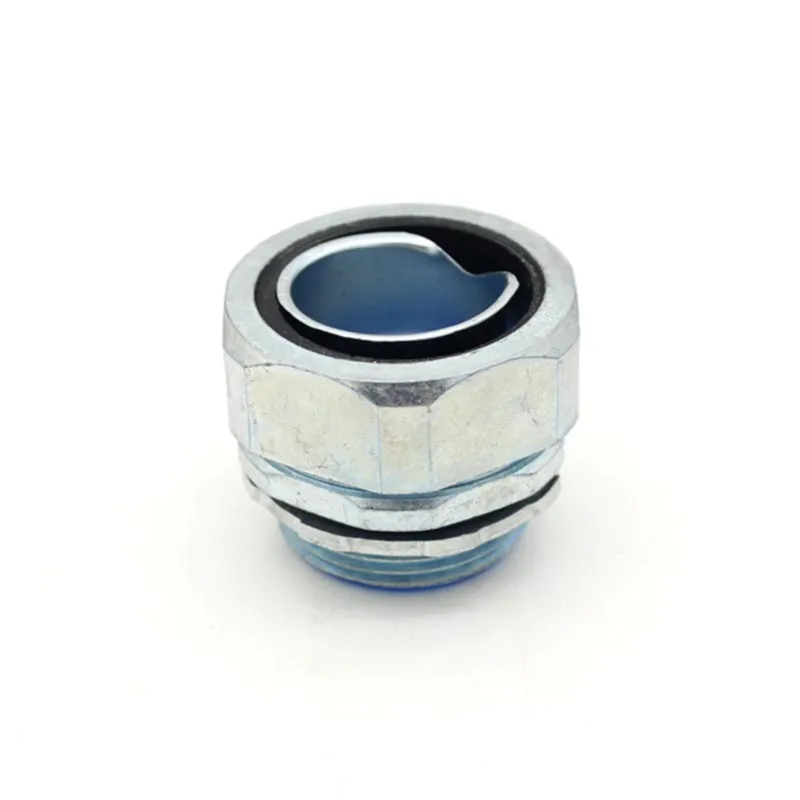Understanding Waterproof Cable Glands: What They Are and Why You Need Them
2024-08-27
In today's interconnected world, protecting electrical and electronic equipment from moisture and dust is more critical than ever. One essential component that helps achieve this protection is the waterproof cable gland. In this blog, we'll explore what waterproof cable glands are, how they work, and why they are indispensable in various industries.

What is a Waterproof Cable Gland?
A waterproof cable gland is a device designed to attach and secure the end of an electrical cable to equipment while maintaining the seal of the enclosure and providing strain relief. These glands ensure that the connection point is sealed against water, dust, and other contaminants, preventing them from entering the equipment and causing damage. Waterproof cable glands are commonly used in harsh environments where moisture or liquid exposure is a concern, such as in outdoor installations, industrial settings, and marine applications.
How Do Waterproof Cable Glands Work?
Waterproof cable glands work by creating a tight seal around the cable and the enclosure it is connected to. They typically consist of several key components:
1. Body: The main part of the gland that houses the other components and attaches to the enclosure or equipment.
2. Sealing Nut: Tightens around the cable to compress the sealing element, creating a watertight seal.
3. Sealing Ring: A rubber or elastomer component that fits around the cable and is compressed by the sealing nut, forming a tight seal to prevent water ingress.
4. Locknut: Secures the gland to the enclosure or equipment, ensuring it stays in place.
5. Gland Nut: Allows the cable gland to grip the cable securely, providing strain relief and preventing the cable from being pulled out or damaged.
By tightening the sealing nut, the sealing ring is compressed around the cable, forming a watertight barrier that prevents moisture and dust from entering the equipment. The gland also provides strain relief, ensuring the cable remains securely in place and reducing the risk of damage from movement or tension.
Benefits of Waterproof Cable Glands
1. Moisture and Dust Protection: The primary function of waterproof cable glands is to provide a seal that prevents moisture, dust, and other contaminants from entering the equipment. This protection is crucial for maintaining the reliability and longevity of electrical and electronic systems.
2. Strain Relief: By securing the cable in place, waterproof cable glands reduce the risk of cable damage due to pulling, twisting, or bending. This strain relief helps prevent electrical failures and extends the life of the cable and equipment.
3. Enhanced Safety: By preventing moisture ingress, waterproof cable glands reduce the risk of electrical shorts, corrosion, and other issues that can compromise safety. This is especially important in environments where electrical failures could pose a significant hazard.
4. Versatility: Waterproof cable glands are available in various sizes, materials, and designs to suit different cable types and applications. This versatility makes them suitable for a wide range of industries and environments.
Applications of Waterproof Cable Glands
1. Outdoor Electrical Installations: Waterproof cable glands are essential for outdoor lighting, CCTV cameras, and other electrical installations where exposure to rain, humidity, and dust is common.
2. Industrial Settings: In factories and industrial plants, waterproof cable glands protect sensitive equipment and cables from the harsh conditions of dust, moisture, and chemical exposure.
3. Marine and Offshore Applications: Waterproof cable glands are critical in marine environments, where equipment is frequently exposed to saltwater and high humidity. They ensure that electrical systems remain safe and operational.
4. Renewable Energy Systems: Solar panels, wind turbines, and other renewable energy systems often operate in harsh outdoor environments. Waterproof cable glands provide the necessary protection to keep these systems running efficiently.
5. Telecommunications: In telecommunications, waterproof cable glands are used to protect cables and connections from moisture and dust, ensuring reliable signal transmission.
Conclusion
Waterproof cable glands are a vital component in protecting electrical and electronic equipment from moisture, dust, and other contaminants. By providing a secure seal and strain relief, they ensure the safety, reliability, and longevity of electrical systems in various industries. Whether you're working on an outdoor installation, an industrial project, or a marine application, waterproof cable glands offer the protection and peace of mind you need to keep your equipment running smoothly.


